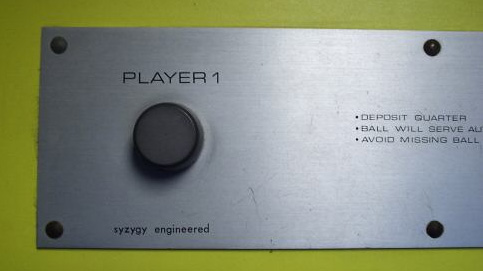If you’ve never heard of "hyper-casual games," don’t be alarmed. It’s a relatively new term, but a genre that's driving mobile growth worldwide – and one you should consider for your next project. Hyper-casual games are ones that don’t need a long on-boarding process or in-depth explanation of rules. These are the sort of games you grasp immediately, just from App Store
screenshots and video intros. The moniker was coined by mobile analytics and marketing firm
AppLovin in 2017. In the
second of a three-part series on the gaming app ecosystem, AppLovin’s Managing Director for EMEA, Johannes Heinze, wrote the following about the rise of easily playable titles:
"In the past few years or so though, I’ve noticed … very enjoyable games that are played by millions on a daily basis – it’s a “less is more” approach. "These games, which I think of as “hyper-casual,” have always been around, and to some extent they are a nostalgic revival of the good old arcade games that were everywhere during the '70s and '80s. But only recently have these games turned into serious business."
Anyone old enough to remember "Pong" in the arcade knows all you had to do was see the machine itself to know how to play. It was clearly digital table-tennis, and the only means of controlling your paddle was a single knob (which you obviously just turned). Even the instructions were hyper-casual, including: “Avoid missing ball”:

Pong also encouraged copycat titles. As AppLovin notes, Hole.io is currently among the top free games in the App Store (in the United States).
We’ve pointed out this is actually a stolen idea – it just beat the original to the punch in terms of release. If we consider
how Hole.io won its race to the bottom, we see the ease and speed at which ‘hyper-casual’ games can be made. Simple graphics, a timer, physics engine, and cloud-based scoring comprise the core of this app. All components you can find via GitHub, or learn to make on your own via tutorials on sites such as Udemy. We’re not saying it’s all dead-simple, but it’s not hard, and definitely not terribly time-consuming. Hole.io doesn’t even charge for downloads. It’s supported by ads; yet another tolerable feature. AppLovin notes this helps encourage downloads because ads keep it free for users; it's a popular way of monetizing games. With hyper-casual games, users also have a tolerance for less-than-sensational graphics. In many cases, old school 8-bit graphics are endearing, and typically easy to learn and produce. Hyper-casual games also don’t require much more than a fairly simple idea. A straightforward game like Canabalt is sensational, but even more elementary endless runners can make their mark (and money). We’re not advocating that developers create also-ran, copycat titles once a popular game has launched. And this isn’t to say hyper-casual games should be considered an instant home-run for a developer. But it’s a genre that users clearly enjoy, and doesn’t require a heavy investment to get up and running. As AppLovin points out, a suite of hyper-casual games can lead to developer success. It advocates for “hedging your bets on a massive pool of users … rather than through faith in a handful of fickle whales.” It’s a strategy many hyper-casual studios follow, and one you can emulate both with games and more traditional apps. And if your first game doesn’t take off, at least the next idea and app may prove quick to build.
 Pong also encouraged copycat titles. As AppLovin notes, Hole.io is currently among the top free games in the App Store (in the United States). We’ve pointed out this is actually a stolen idea – it just beat the original to the punch in terms of release. If we consider how Hole.io won its race to the bottom, we see the ease and speed at which ‘hyper-casual’ games can be made. Simple graphics, a timer, physics engine, and cloud-based scoring comprise the core of this app. All components you can find via GitHub, or learn to make on your own via tutorials on sites such as Udemy. We’re not saying it’s all dead-simple, but it’s not hard, and definitely not terribly time-consuming. Hole.io doesn’t even charge for downloads. It’s supported by ads; yet another tolerable feature. AppLovin notes this helps encourage downloads because ads keep it free for users; it's a popular way of monetizing games. With hyper-casual games, users also have a tolerance for less-than-sensational graphics. In many cases, old school 8-bit graphics are endearing, and typically easy to learn and produce. Hyper-casual games also don’t require much more than a fairly simple idea. A straightforward game like Canabalt is sensational, but even more elementary endless runners can make their mark (and money). We’re not advocating that developers create also-ran, copycat titles once a popular game has launched. And this isn’t to say hyper-casual games should be considered an instant home-run for a developer. But it’s a genre that users clearly enjoy, and doesn’t require a heavy investment to get up and running. As AppLovin points out, a suite of hyper-casual games can lead to developer success. It advocates for “hedging your bets on a massive pool of users … rather than through faith in a handful of fickle whales.” It’s a strategy many hyper-casual studios follow, and one you can emulate both with games and more traditional apps. And if your first game doesn’t take off, at least the next idea and app may prove quick to build.
Pong also encouraged copycat titles. As AppLovin notes, Hole.io is currently among the top free games in the App Store (in the United States). We’ve pointed out this is actually a stolen idea – it just beat the original to the punch in terms of release. If we consider how Hole.io won its race to the bottom, we see the ease and speed at which ‘hyper-casual’ games can be made. Simple graphics, a timer, physics engine, and cloud-based scoring comprise the core of this app. All components you can find via GitHub, or learn to make on your own via tutorials on sites such as Udemy. We’re not saying it’s all dead-simple, but it’s not hard, and definitely not terribly time-consuming. Hole.io doesn’t even charge for downloads. It’s supported by ads; yet another tolerable feature. AppLovin notes this helps encourage downloads because ads keep it free for users; it's a popular way of monetizing games. With hyper-casual games, users also have a tolerance for less-than-sensational graphics. In many cases, old school 8-bit graphics are endearing, and typically easy to learn and produce. Hyper-casual games also don’t require much more than a fairly simple idea. A straightforward game like Canabalt is sensational, but even more elementary endless runners can make their mark (and money). We’re not advocating that developers create also-ran, copycat titles once a popular game has launched. And this isn’t to say hyper-casual games should be considered an instant home-run for a developer. But it’s a genre that users clearly enjoy, and doesn’t require a heavy investment to get up and running. As AppLovin points out, a suite of hyper-casual games can lead to developer success. It advocates for “hedging your bets on a massive pool of users … rather than through faith in a handful of fickle whales.” It’s a strategy many hyper-casual studios follow, and one you can emulate both with games and more traditional apps. And if your first game doesn’t take off, at least the next idea and app may prove quick to build. 


